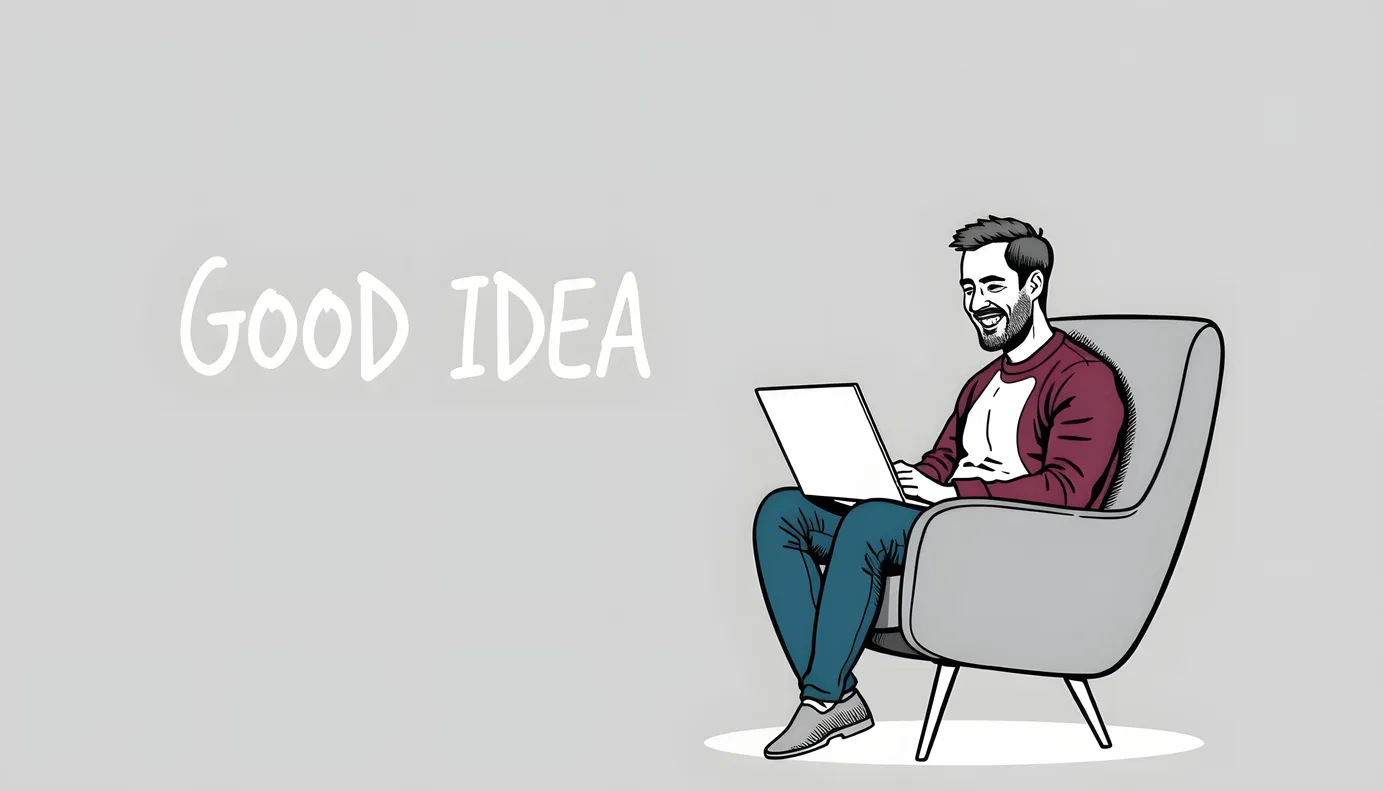The Hidden Midlife Beliefs Holding You Back Pt 1

Summary: Identify the subconscious beliefs shaping your midlife choices—and learn how to spot the traps holding you back.
Ever find yourself second-guessing a bold decision or feeling like your best professional years are behind you? If you’ve had these thoughts, you’re not alone.
Midlife, for many, is a moment ripe for reinvention—an exciting opportunity to carve new paths in your career or rediscover passions long put on hold. But, sometimes, the mental scripts and beliefs we’ve carried for decades can quietly hold us back, keeping us from reaching our full potential.
This is the first in our two-part series on midlife thinking traps. Here, we’ll help you identify the subconscious biases, outdated self-talk, and myths that could be limiting your growth. By naming these traps, you’ll be better prepared to challenge them and step into part two so you can take control of your midlife evolution.
Are You Sabotaging Your Own Midlife Potential?
Picture this. You’re considering a career change after years in the same field. Deep down, you know an industry pivot could re-ignite your passion or provide a better work-life balance. But then a voice whispers, “Am I too old to compete in a new field? What if I don’t succeed?”
Sound familiar?
For many, midlife is when these doubts creep in the loudest. The mental blueprints that once propelled us forward might now feel like barriers to new opportunities. From navigating the rise of new technology to balancing personal responsibilities, the desire for growth can clash with the comfort zones we’ve lived in for years.
But here's the exciting truth. Midlife is your opportunity to rewrite these scripts and thrive.
Before moving forward, you need to learn about these traps and how they appear in your day-to-day decisions. And that’s precisely where we’ll start.
Everyday Situations Where These Traps Arise
Midlife thinking traps don’t only appear in obvious moments of hesitation—like deciding whether to quit a job or dream bigger. They're often lurking in the background of life’s day-to-day decisions. Here are some common scenarios:
Pivoting Careers or Starting a Business
You’re ready for a fresh start, but worries about age and competition with younger talent weigh you down.
Adopting New Technology
AI and digital tools dominate your industry, but you’re hesitant. “Can I catch up, or am I already too far behind?”
Balancing Responsibilities
Between supporting adult children or caring for aging parents, experimenting with new hobbies or ambitions seems impossible.
Adapting Your Skillset
You desire to stay relevant but fear you’ve missed the boat on learning new skills.
Pursuing Personal Projects
A passion project calls your name, but you hesitate, wondering if it’s too late to start.
It’s in these vulnerable moments that mental traps can quietly hold you back.
Recognizing them is the first step to breaking free.
Mental Models & Hidden Biases
Our mental models are like lenses—we see the world (and our place in it) through them. If those lenses are smudged by bias, we interpret events in ways that reinforce our old assumptions.
Fixed Mindset
A fixed mindset convinces you that your abilities are unchangeable. Ever found yourself thinking, “If I haven’t mastered public speaking by now, I never will”? That’s the hallmark of this trap.
The risk is that if you avoid certain challenges, you'll miss out on opportunities to uncover hidden talents or develop skills that could unexpectedly elevate your career.
Confirmation Bias
Confirmation bias leads you to seek out information that supports your beliefs while ignoring evidence that contradicts them.
For instance, if you assume, “People over 50 can’t land good jobs,” you might focus only on negative news about layoffs, dismissing stories of successful midlife entrepreneurs or professionals pivoting to fulfilling careers.
This narrow perspective reinforces limiting beliefs, even when plenty of counterexamples exist.
Negativity Bias
Negativity bias amplifies failures while minimizing successes. For example, one unproductive job interview can feel like proof the job market isn’t open to midlifers, even though many peers are landing great roles.
Dwelling on setbacks distorts reality, making it harder to notice incremental wins and fresh possibilities.
Sunk Cost Fallacy
The sunk cost fallacy tempts you to stick with a particular career path, relationship, or goal simply because of the time or resources you’ve already invested.
You might think, “I’ve been in this industry for 20 years—it’s too late to make a change.” But clinging to the familiar just because of past effort may keep you trapped in an unrewarding situation, blocking the way to more fulfilling opportunities.
Self-Fulfilling Prophecies
Self-fulfilling prophecies tied to age can silently influence your actions. Believing “No one wants to hire people over 50” might discourage you from updating your skills or networking, which in turn reduces your chances of landing a new role—not due to age, but because you’ve stopped putting yourself out there.
Outdated Phrases & Aphorisms
We’ve all heard sayings like “Act your age” or “Better safe than sorry.” While they may seem harmless, letting these phrases dictate your thoughts can prevent you from exploring fresh opportunities in midlife.
We could write a book on all the expressions we've picked up along the way, just to illustrate how dangerous they can be. Below are ten examples that might be holding you back more than you realize:
"It's all downhill from here"
This phrase suggests that life inevitably takes a turn for the worse after reaching a certain milestone—whether it’s 40, 50, or beyond. But we know that midlife often marks the beginning of exciting opportunities, including new careers, personal reinvention, and meaningful growth. That's why you're here.
Thinking you’ve already peaked can prevent you from pursuing unexplored paths or embracing new challenges. The real truth is that you don’t know what you’re capable of achieving until you take the first step.
“Success is just around the corner”
While staying positive is vital, this phrase can create unrealistic expectations, implying that success is a matter of waiting or perseverance alone, and this mindset can lead to frustration when rewards don’t materialize quickly.
It’s more empowering to view success as an ongoing process—one that requires deliberate action, adaptability, and consistent refinement of your goals. Success isn’t a guarantee; it’s something you actively forge over time.
Besides, the universe doesn't owe you anything!
“Age is just a number”
This phrase is often used to challenge stereotypes and combat ageism, and while it can be encouraging, it can also oversimplify the realities of aging. By dismissing the changes that come with age, whether physical or lifestyle-related, you might miss opportunities to adapt and thrive proactively.
Taking care of your health, shifting priorities, and adjusting your approach to learning or work can make midlife more enriching and empowering than pretending that age doesn’t matter.
“Jack of all trades, master of none”
This saying carries the assumption that versatility leads to mediocrity. Yet, there's much to be said for becoming a generalist or blending diverse skills in unique ways—often called “skill stacking.”
Combining expertise in areas like leadership and technology, or data analysis and storytelling, can create unique value in today’s evolving job market. Instead of dismissing versatility, recognize that being a generalist can create a foundation for innovation and standout opportunities.
“You can’t have your cake and eat it too”
This phrase reinforces the idea that pursuing multiple goals is unrealistic, as one must come at the expense of another.
While life does involve trade-offs, with careful planning and creativity, it’s possible to balance multiple aspirations. Breaking larger goals into smaller, actionable steps can help you align your ambitions without feeling forced into an all-or-nothing mindset. Sometimes, the key is finding the middle ground where both priorities can coexist.
“The sky is the limit”
While this phrase encourages ambition, it can sometimes gloss over practical limitations like financial constraints, health, or time. Setting lofty goals is invaluable, but achieving them requires thoughtful assessment of risks, resources, and priorities.
Yes, you should aim high, but remain grounded—strategizing for the long term helps ensure that your ambition translates into sustainable success.
“Better safe than sorry”
While caution has its place, an excessive focus on staying safe can keep you from taking manageable risks. Exploring a new career path, pursuing a passion project, or investing in yourself can lead to fulfilling opportunities.
“If it ain’t broke, don’t fix it”
This mindset can prevent growth by discouraging proactive improvements. Midlife is the perfect time for small but meaningful upgrades, whether in your career, health, or daily routines, to keep you sharp and thriving.
“You can’t teach an old dog new tricks”
Age doesn’t define your ability to learn—it defines your wealth of experience. When you believe growth isn’t possible, you limit yourself. Instead, view midlife as an opportunity to master fresh skills and expand your capacity to adapt.
“Stick to your guns”
Commitment is a strength, but stubbornly clinging to outdated ideas or approaches can limit your evolution. Sometimes, pivoting or adjusting your perspective opens doors to possibilities you hadn’t imagined.
So Why Does All This Matter?
How we talk about midlife—including outdated phrases or deeply ingrained beliefs—impacts how we experience it. We risk reinforcing limiting beliefs when we uncritically repeat these sayings or cling to old mental models. These habits can subtly convince us that our prime is behind us or that growth and change are out of reach.
But here’s the truth: midlife isn’t a single moment in time—it’s a series of transitions. Recognizing these mental traps isn’t about dismissing wisdom from the past; it’s about knowing when these patterns support growth and when they hold you back. Sometimes, a fresh perspective is all it takes to ignite the next chapter of your evolution.
The Solution? Rethink Your Mindset
The first step to moving forward is recognizing the problem. Awareness empowers you to identify and challenge these mental traps before they shape your decisions. From there, you can start reframing limiting beliefs and replacing them with thoughts that encourage reinvention, growth, and adaptability.
If your goal is to stay professionally engaged and active into your 70s and beyond, the key isn’t just to "keep up." It's to stay curious, challenge outdated assumptions, and rewrite the outdated narratives that no longer serve you.
Awareness Comes First
You can’t disrupt what you don’t notice. Start by spotting where ideas like the Fixed Mindset or Sunk Cost Fallacy could be holding you back.
Words Matter
Phrases like “You can’t teach an old dog new tricks” seem harmless but can quietly reinforce self-imposed barriers.
Revise the Script
Small changes in how you think and speak—like replacing “I’m too old” with “What can I adjust to make this happen?”—can unlock new opportunities.
Ready for Part 2?
Identifying these mental traps is just the beginning. In Part 2, we’ll dig into practical strategies to break free—so you can stay professionally active, re-skill with confidence, and approach midlife as a prime time for growth.






